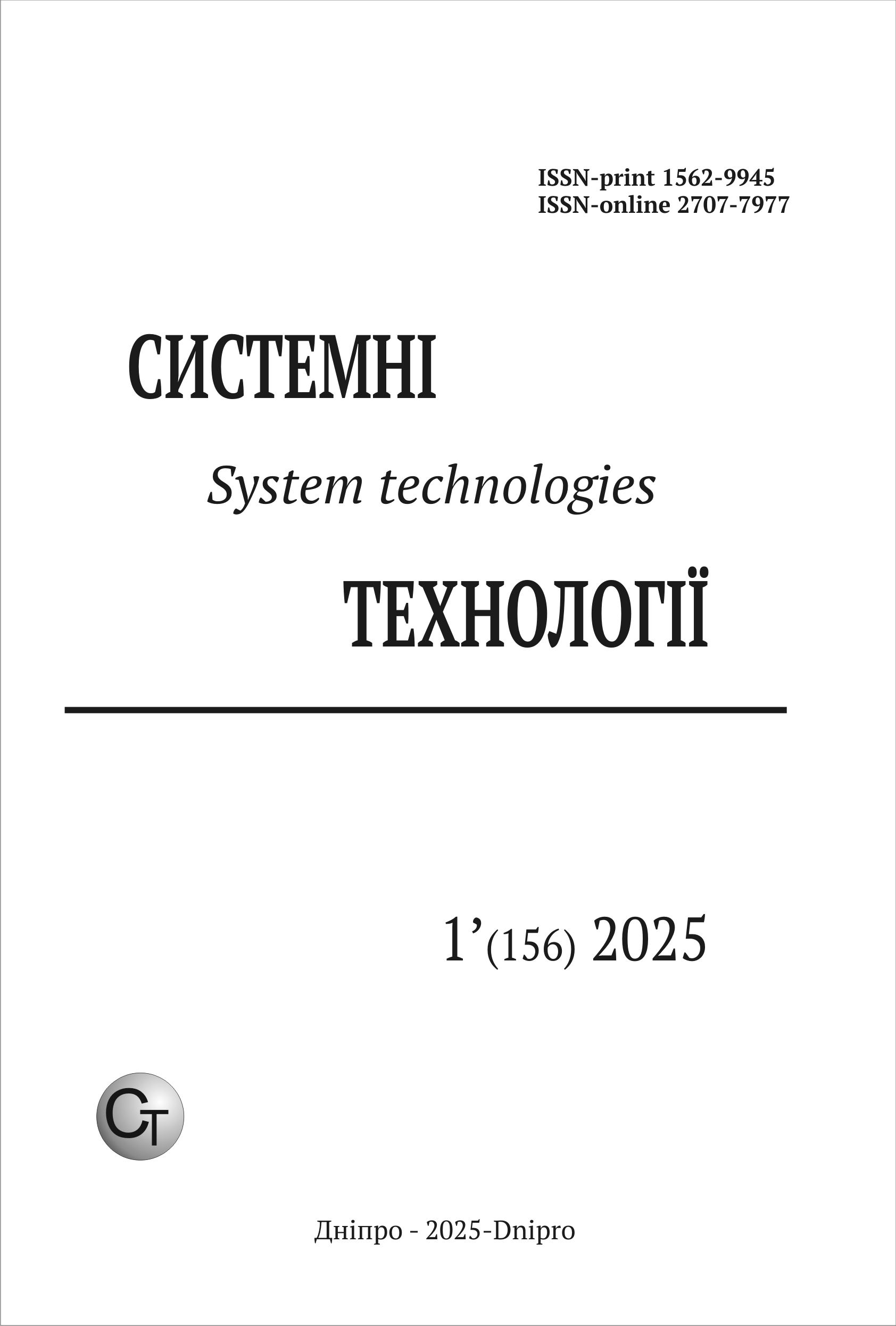Standardization of power quality indicators and the causes of their deviations from established norms
DOI:
https://doi.org/10.34185/1562-9945-1-156-2025-20Keywords:
power quality, PQ standards, IEEE standards, EN 50160, harmonic distortion, flicker, distributed generation, microgrids, compensation, energy regulations.Abstract
The aim of this study is a comprehensive investigation into the standardization and assurance of electric power quality under modern challenges, particularly the active integration of distributed energy resources, microgrids, electromobility, and the widespread use of power electronics. The article focuses on systematizing current regulatory requirements for power quality indicators and identifying the main causes of their deviation from established standards. The methods. The study employs a critical analysis of international and national standards (EN 50160, IEEE 1159, IEEE 519, IEC 61000), as well as a review of scientific literature and practical case studies related to the detection, classification, and mitigation of power quality disturbances. Typical PQ issues, their root causes, and preventive measures are generalized. Findings. The paper presents a list of key power quality parameters (frequency, voltage, flicker, harmonics, unbalance, short-term events), their permissible values according to standards, and specific monitoring features in modern power networks. It also discusses the physical causes of quality deterioration, such as faults, nonlinear loads, motor startups, load fluctuations, and weather phenomena. The impact of emerging technologies (DG, RES, EV charging) on PQ is analyzed. The originality. A holistic approach is proposed to analyze the regulatory and technical framework of power quality, considering modern energy trends. For the first time, both normative aspects and practical influencing factors are consolidated in a single study with detailed mechanisms of their manifestation. Practical implementation. The findings can serve as a foundation for updating local standards, improving monitoring systems, implementing intelligent compensation devices, and educating power system personnel in power quality management.
References
Martinez, R., Castro, P., Arroyo, A., Manana, M., Galan, N., Moreno, F. S., Bustamante, S., & Laso, A. (2022). Techniques to Locate the Origin of Power Quality Disturbances in a Power System: A Review. Sustainability, 14(12), 7428. https://doi.org/10.3390/su14127428
Afonso, J. L., Tanta, M., Pinto, J. G. O., Monteiro, L. F. C., Machado, L., Sousa, T. J. C., & Monteiro, V. (2021). A Review on Power Electronics Technologies for Power Quality Improvement. Energies, 14(24), 8585. https://doi.org/10.3390/en14248585
Lumbreras, D., Gálvez, E., Collado, A., & Zaragoza, J. (2020). Trends in Power Quality, Harmonic Mitigation and Standards for Light and Heavy Industries: A Review. Energies, 13(21), 5792. https://doi.org/10.3390/en13215792
Li J, Liu H, Wang D and Bi T (2021) Classification of Power Quality Disturbance Based on S-Transform and Convolution Neural Network. Front. Energy Res. 9:708131. doi: 10.3389/fenrg.2021.708131
D. Razmi, T. Lu, B. Papari, E. Akbari, G. Fathi and M. Ghadamyari, "An Overview on Power Quality Issues and Control Strategies for Distribution Networks With the Presence of Distributed Generation Resources," in IEEE Access, vol. 11, pp. 10308-10325, 2023, doi: 10.1109/ACCESS.2023.3238685.
Sepasi, S., Talichet, C., & Pramanik, A. S. (2023). Power quality in microgrids: A critical review of fundamentals, standards, and case studies. IEEE Access, 11, 8493–8510. https://doi.org/10.1109/ACCESS.2023.3321301
Van den Broeck, G., Stuyts, J., & Driesen, J. (2018). A critical review of power quality standards and definitions applied to DC microgrids. Applied Energy, 229, 281–288. https://doi.org/10.1016/j.apenergy.2018.08.077
Wang, S., & Chen, H. (2019). A novel deep learning method for the classification of power quality disturbances using a deep convolutional neural network. Applied Energy, 235, 1126–1140. https://doi.org/10.1016/j.apenergy.2018.11.087
Diab, M.; Abdelhamid, T.H.; Deghedie, S. Survey of Active Power Filters Configurations. In Proceedings of the 2018 IEEE International Conference on System, Computation, Automation and Networking (ICSCA), Pondicherry, India, 6–7 July 2018; IEEE: Pondicherry, India, 2018; pp. 1–14.
Tareen, W.U.; Mekhilef, S.; Seyedmahmoudian, M.; Horan, B. Active power filter (APF) for mitigation of power quality issues in grid integration of wind and photovoltaic energy conversion system. Renew. Sustain. Energy Rev. 2017, 70, 635–655.
Chen, J.-H., Tan, K.-H., & Lee, Y.-D. (2022). Intelligent Controlled DSTATCOM for Power Quality Enhancement. Energies, 15(11), 4017. https://doi.org/10.3390/en15114017
Hafezi, H.; D’Antona, G.; Dedè, A.; Della Giustina, D.; Faranda, R.; Massa, G. Power Quality Conditioning in LV Distribution Networks: Results by Field Demonstration. IEEE Trans. Smart Grid 2017, 8, 418–427.
Das, C. K., Bass, O., Mahmoud, T. S., Kothapalli, G., Mousavi, N., Habibi, D., & Masoum, M. A. (2019). Optimal allocation of distributed energy storage systems to improve performance and power quality of distribution networks. Applied Energy, 252, 113468. https://doi.org/10.1016/j.apenergy.2019.113468
Dovgun, V., Temerbaev, S., Chernyshov, M., Novikov, V., Boyarskaya, N., & Gracheva, E. (2020). Distributed power quality conditioning system for three-phase four-wire low voltage networks. Energies, 13(18), 4915. https://doi.org/10.3390/en13184915
Bagheri, M., Nurmanova, V., Abedinia, O., & Naderi, M. S. (2018). Enhancing power quality in microgrids with a new online control strategy for DSTATCOM using a reinforcement learning algorithm. IEEE Access, 6, 38986–38996. https://doi.org/10.1109/ACCESS.2018.2855221
P. I. N. Barbalho, A. L. Moraes, V. A. Lacerda, P. H. A. Barra, R. A. S. Fernandes and D. V. Coury, "Reinforcement Learning Solutions for Microgrid Control and Management: A Survey," in IEEE Access, vol. 13, pp. 39782-39799, 2025, doi: 10.1109/ACCESS.2025.3546578
EN 50160:2010. Voltage Disturbances Standard EN 50160-Voltage Characteristics in Public Distribution Systems; Normalization Spanish Association: Madrid, Spain, 2010.
IEEE Std 519-2014. (2014). IEEE Recommended Practice and Requirements for Harmonic Control in Electric Power Systems. IEEE Standards Association.
IEEE Std 1159-2019. (2019). IEEE Recommended Practice for Monitoring Electric Power Quality. IEEE Standards Association. https://doi.org/10.1109/IEEESTD.2019.8796486
IEC TS 62749:2020. (2020). Assessment of power quality – Characteristics of electricity supplied by public networks. International Electrotechnical Commission.
CENELEC. Voltage Characteristics of Electricity Supplied by Public Electricity Networks; EN 50160:2010; CENELEC: Brussels, Belgium, 2010.
Markiewicz, H.C.D.A.; Klajn, A.W.U.o.T. Power Quality Application Guide. Voltage Disturbances. Standard EN 50160. Power Qual. Appl. Guide 2004, 5.4.2, 4–11.
Roger Alves de Oliveira, Bibiana Petry Ferraz, Ruth Agustini, Renato Ferraz, Roberto Chouhy Leborgne, Chapter 8 - Voltage dips caused by faults in a transmission system: a monitoring case study of a sensitive industrial consumer, Editor(s): P. Sanjeevikumar, C. Sharmeela, Jens Bo Holm-Nielsen, P. Sivaraman, Power Quality in Modern Power Systems, Academic Press, 2021, Pages 219-244, ISBN 9780128233467, https://doi.org/10.1016/B978-0-12-823346-7.00006-2.
https://powerquality.blog/2022/04/08/industrial-power-quality-problems
Downloads
Published
Issue
Section
License
Copyright (c) 2025 System technologies

This work is licensed under a Creative Commons Attribution 4.0 International License.















